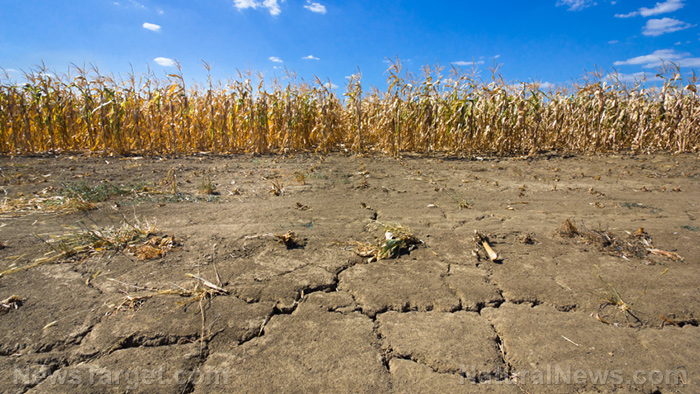Flooding in West China submerges villages, destroys crops
10/20/2021 / By Ramon Tomey

Heavy flooding has caused significant damage in China’s Shaanxi province, submerging homes and affecting many villages and residents. Persistent downpour led to the Luo River overflowing, which has also affected agriculture in the area. Local farmers in the province lament that the flooding has compromised both harvests and livestock.
According to the Epoch Times, continuous rains for more than ten days are responsible for the flooding. This has caused the Luo River’s lower reaches to spill their banks, releasing large volumes of flood water. The report adds that floodwaters have also destroyed two dams in one Shaanxi county.
Dali County in Shaanxi is one of many areas damaged by the Luo River’s overflow, with 108 villages in the county being affected. Xin Ming, a resident of Xinsi village in the county’s Zhaodu town, describes the disaster: “The village was completely submerged, about two meters deep, and the houses and furniture were all immersed in the water.”
The flood has also damaged the county’s harvest of jujubes for the autumn. Xin, who also owns a jujube plantation, adds that the waters have inundated five acres of jujube trees. “The winter jujube in the field is almost completely submerged, and the greenhouses are also completely submerged,” he laments.
Livestock farmer and Zhaodu resident Xue Fei also attests to the damage caused by the flood. “Cows and pigs were killed by the flood, and the farmers have suffered particularly great losses,” he says. About 29,000 acres of farmland in Zhaodu were submerged in floodwaters, the Epoch Times reports.

Villagers received an immediate evacuation notice from Zhaodu officials during the morning of Oct. 9, with 25,126 people urgently evacuated. “The water was rising rapidly, and the time for people to evacuate was very short,” Xue points out.
Dali residents claim flooding was intentional to protect other areas
Local media reports mention that Dali County has experienced heavy rains during the fall season. These rains have also caused water levels in the Wei and Luo Rivers – which run across Shaanxi Province – to rise beyond their warning levels, leading to serious floods. (Related: China faces worst flood in decades as Yangtze water levels reach record highs.)
However, some locals suspect that floodwaters have been intentionally released to protect other areas. Xin believes that authorities released a large volume of water into Dali to protect the Gansu and Henan provinces. The jujube farmer is not the only one espousing this sentiment.
“In order to protect Gansu in the upper stream and Henan in the lower stream, authorities in Shaanxi province opened their own gates for two flood releases. The flood passed through Dali, and the dam broke,” the affected villagers claim.
However, a staff member of the Dali County Flood Control Command tells the Epoch Times that they did not release floodwaters.
Meanwhile, the South China Morning Post reports that Shanxi province – Shaanxi’s western neighbor – also suffered floods and landslides caused by days of heavy rains. The province says at least five people have died due to landslides and 120,000 people have been displaced.
A total of 1.75 million people have been affected by the floods and landslides in the province, according to the Shanxi emergency management department. It adds that more than 17,000 buildings have collapsed in the province due to the downpour. The heavy rains have also destroyed foundations for a railway crossing over the Changyuan River – with footage on social media showing rail track dangling along the river.
The continued deluge has prompted the suspension of construction work at more than 1,000 building projects in Shanxi. The province, a major coal producer, has also shut down 60 coal mines – exacerbating fuel supply issues in China. (Related: Price of coal futures in China surges as heavy rains force mines to close, worsening country’s energy crisis.)
Sources include:
Tagged Under: agriculture, China, Climate, Dali County, environment, flood gates, heavy rains, jujube trees, livestock, Luo River, natural disasters, river overflow, Shaanxi province, yearly flooding





















